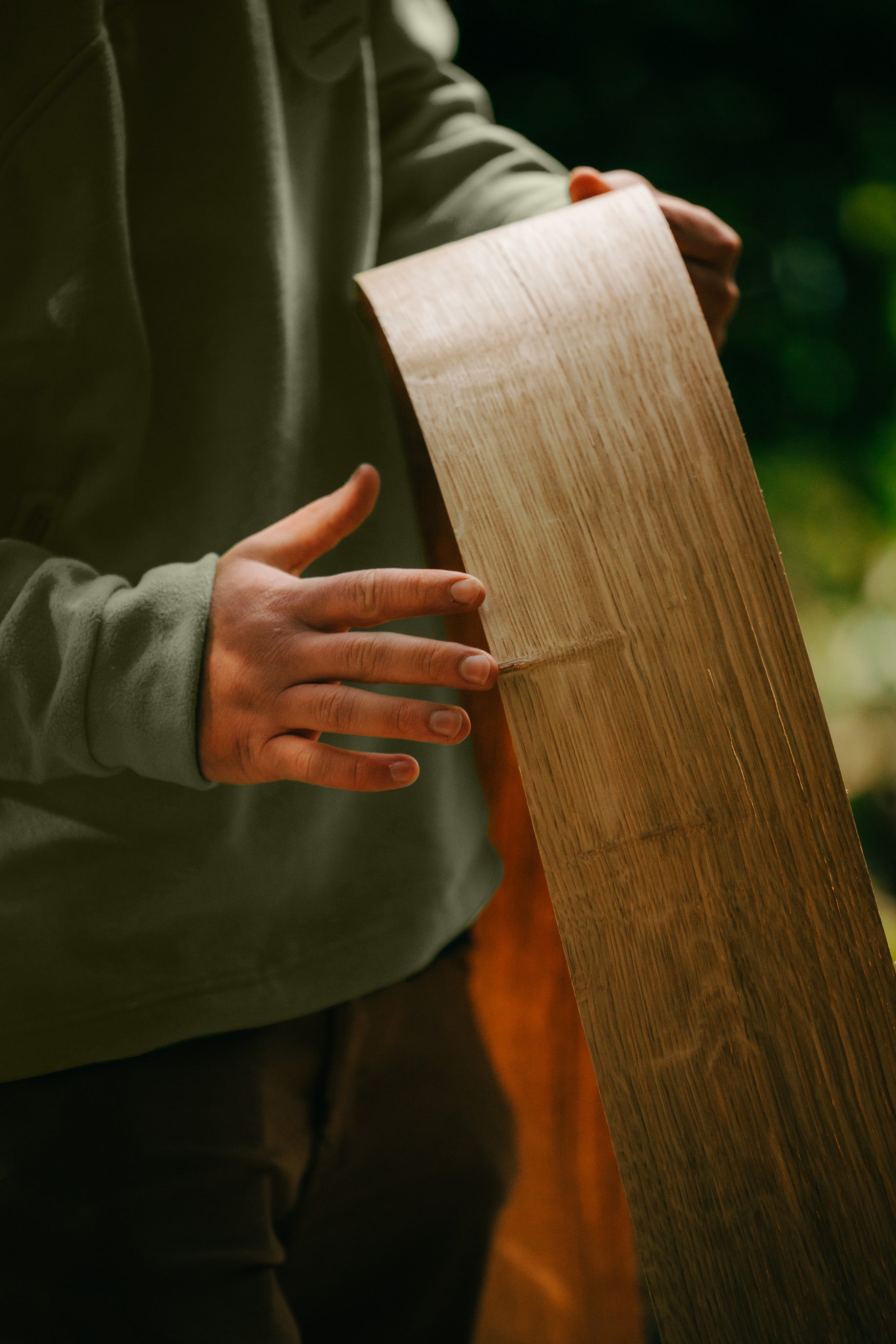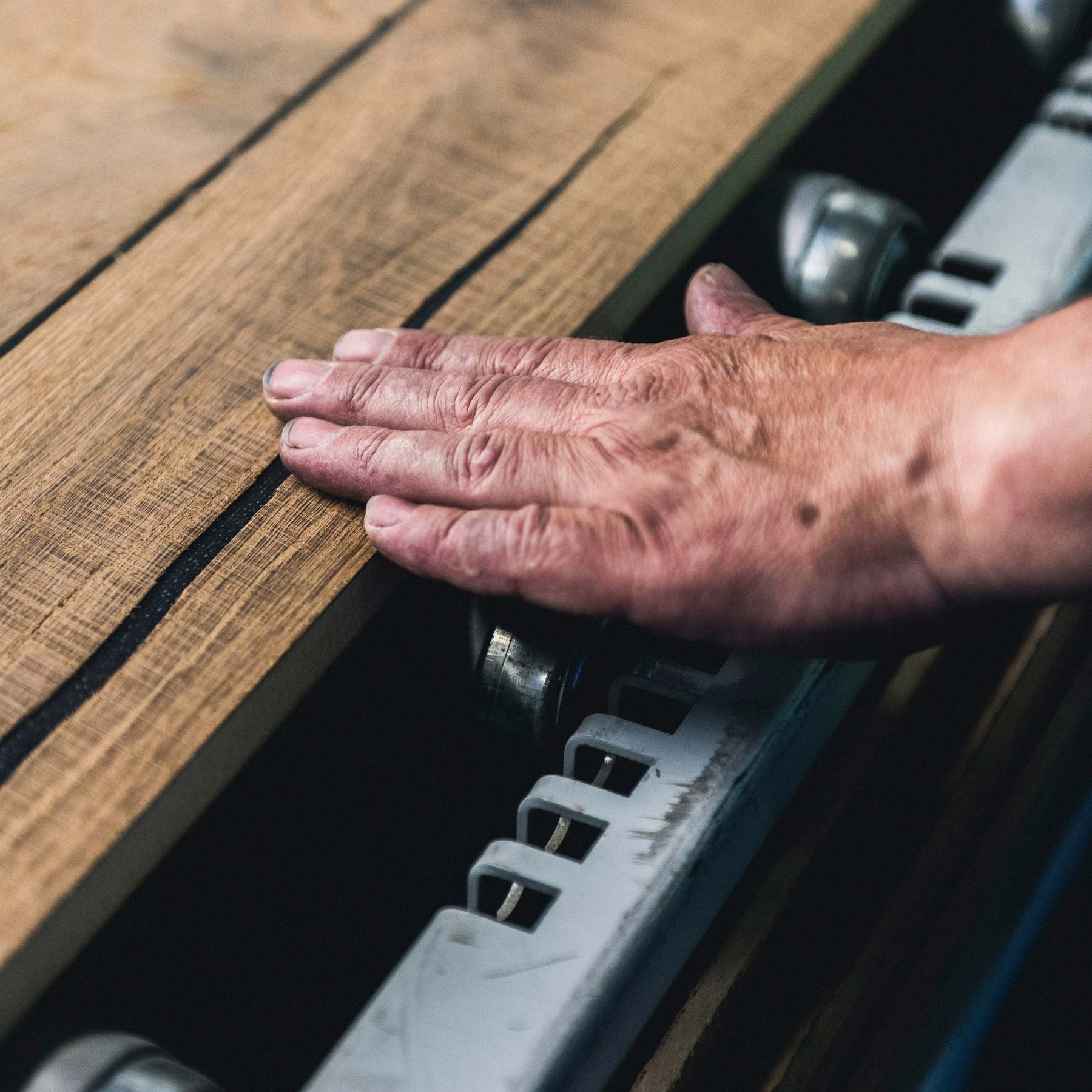Wood veneer is a thin layer of natural wood, sliced from a tree trunk. The thickness varies between 0.5 mm, which is standard, and 2 mm. Unlike solid wood that is sawn, the log is utilised to the max, without any sawing loss.
Wood veneer has the warm feel of robust wood, but due to the thin cut, it gets the most out of a tree.

The abundance of wood imitations makes it challenging to differentiate between genuine natural products and imitations. But wood veneer is unique.
The main difference between veneer and imitations lies in the presence of real wood. Each tree has its own distinctive appearance. It is impossible to find two identical trees in nature, resulting in significant colour and pattern variations even within the same wood species.
Alternatives like laminate or melamine (engineered material usually constructed of plastic and bonded to a composite base) only mimic this appearance and have a repetitive pattern compared to real wood veneer. No imitation can recreate touch of real wood.
These alternatives are generally more resistant to scratches, stains and discolouration. Yet at Decospan, we have dedicated years of research and development to create long-lasting, high-quality products. We strive to improve the durability and performance of our wood products, making them more resistant and easier to maintain.

Using wood as our primary resource, we prioritise sustainable management. Our commitment is to utilise veneer in all its facets, maximising the full potential of each tree trunk whilst working with legally and responsibly-sourced trees.

- Always a unique character
- The most sustainable option
- Choose your look
- Ideal for every interior application
- ...
